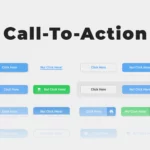Web design is an ever-evolving field, with trends constantly shifting to accommodate new technologies, user preferences, and creative approaches. As we approach 2024, several design trends are emerging that are shaping the future of web design. These trends focus on improving user experience, enhancing visual aesthetics, and leveraging innovative technologies. In this article, we’ll explore the top design trends for 2024 and how they can influence the way you design websites.
1. Micro-Interactions and Animations
Micro-interactions and subtle animations continue to gain popularity for their ability to enhance user experience and engagement. These small, interactive elements can add personality and delight to your website, whether through hover effects, loading animations, or interactive buttons. Thoughtful use of micro-interactions can guide users, provide feedback, and create a sense of fluidity in the design.
2. Dark Mode and High-Contrast Themes
Dark mode has become a prominent design option due to its aesthetic appeal and user comfort. High-contrast themes are also gaining popularity as they improve accessibility and readability, especially in low-light environments. Offering users the choice between light and dark modes enhances the overall user experience.
3. AI-Powered Design Tools
Artificial intelligence (AI) is making its mark on web design with AI-powered design tools that can assist designers in creating layouts, choosing color palettes, and even generating content. These tools can streamline the design process and help designers experiment with different ideas more efficiently.
4. 3D and Immersive Experiences
3D elements and immersive experiences are becoming more prevalent in web design, thanks to advancements in web technologies. These elements can add depth and interactivity to your website, providing a unique and engaging experience for users. 3D graphics and animations can be used strategically to enhance storytelling and product showcases.
5. Asymmetry and Creative Layouts
While grid-based designs remain a staple in web design, more creative and unconventional layouts are gaining traction. Asymmetry, overlapping elements, and abstract compositions can add a modern and dynamic feel to your website. These design choices can help create a more memorable and visually striking user experience.
6. Inclusive and Accessible Design
Inclusive and accessible design continues to be a top priority for web designers. Ensuring your website is usable by people of all abilities, including those with visual, auditory, and motor impairments, is not only a legal requirement in many regions but also a best practice for creating a welcoming user experience.
7. Bold Typography
Bold typography is making a statement in web design, with designers using large, impactful fonts to grab attention and convey brand identity. Creative use of typography can enhance your website’s aesthetics and emphasize key messages.
8. Sustainable Design Practices
Sustainable design is becoming increasingly important as designers aim to reduce the carbon footprint of websites. This includes optimizing performance to reduce energy consumption, using sustainable web hosting, and being mindful of the environmental impact of design choices.
9. Integrated Video Content
Video content remains a powerful storytelling tool, and its integration into web design is becoming more seamless. From background videos to interactive video elements, incorporating video can enrich the user experience and convey complex information more effectively.
10. Minimalism and Focused Content
Minimalist design remains a strong trend, with a focus on simplicity, clarity, and user-centered content. By reducing clutter and emphasizing key elements, you can create a more intuitive and streamlined user experience. Minimalist design also complements fast loading times and improved performance.
Conclusion
As web design continues to evolve, staying up-to-date with the latest trends can help you create modern, engaging, and user-friendly websites. By incorporating trends such as micro-interactions, dark mode, AI-powered tools, and sustainab


